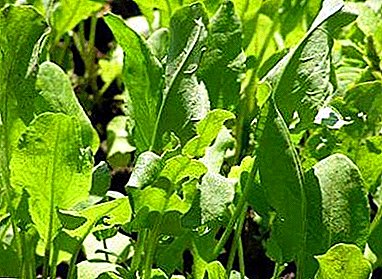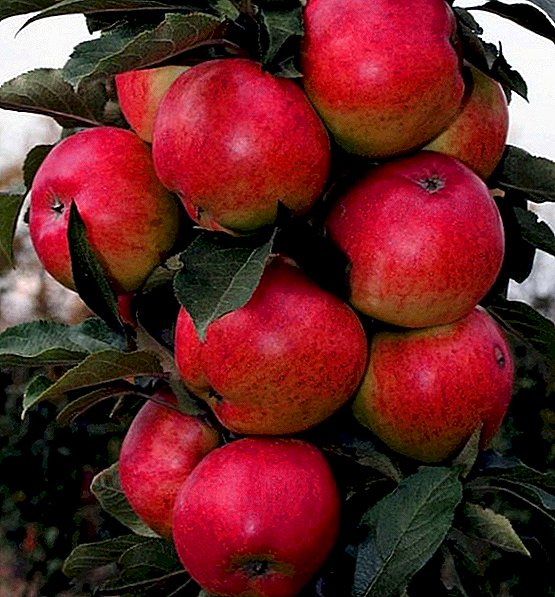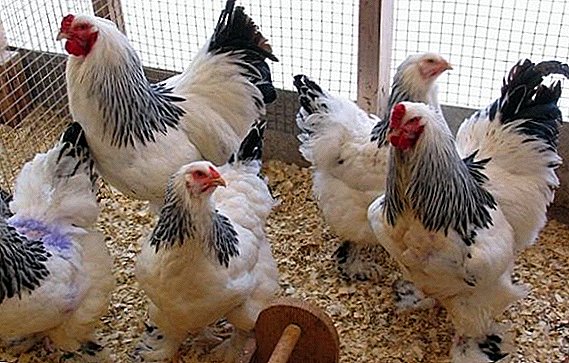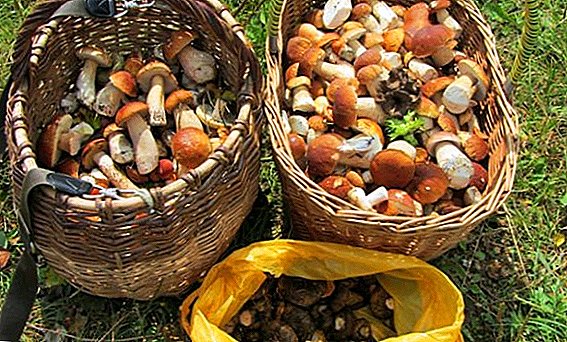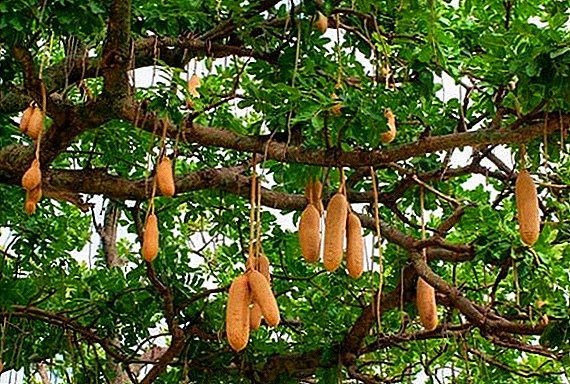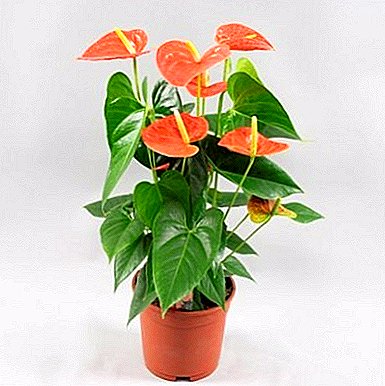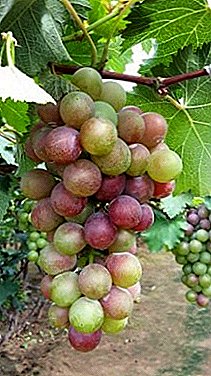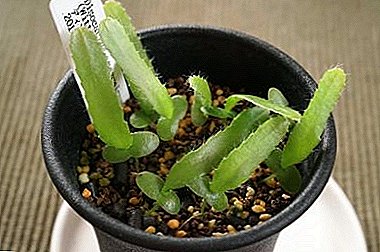
The homeland of "Aporocactus" - the tropical regions of AmericaIt is most often found in the Mexican states of Hidalgo and Oaxaca, as well as in Honduras, Panama, Northern Peru, Guatemala, and Colombia.
general description
Culture loves altitude, and in nature "climbs" on rocky slopes up to 2.5 km above sea level. With their roots, these epiphytes grow into protrusions of stones, branches of more powerful bushes and trees, creating sometimes thick thickets. The wild plant branches strongly at the base and has long thin stems, with subtle ribs. The surface is densely covered with golden bristles.
Views from the photo
Each species has its own characteristics. They consist in a different form of shoots, fruits, sizes and form.
"Weave" (A. Flagelliformis)
The weave cactus has a branched bright green, shiny stem up to 1 meter, in cross section - 2 centimeters. The young shoot is directed upwards, and only over time it drops. Halos are located at close range and showered with thin golden spines resembling bristles.
The flowers have a red-pink color, funnel-shaped, rather large - about 8 cm in length and 6 cm in diameter, fruits - red berries, studded with spines.
The photo shows the cactus "Aporokaktus Pleyiform", with proper care:
Kontsatti (A. Conzattii)
The stems of Kontsatti are creeping, up to 2 cm thick. Shoots - bright green, with aerial roots. The relief is formed by 8–12 low ribs and tubercles. Halos are close to each other, spines are spread over the entire surface.
The flowers of Kontsatti are red with a brick shade, up to 9 centimeters high. The central spines have a brown-yellow color, radial - light and red-brown.
The photo shows the cactus "Aporocactus Kontsatti", with proper care:
Ackermann (D. Ackermannii)
It has belt-shaped shoots with scalloped edges. The flowers are fluffy, large - up to 10 cm on a tall tube. Corolla well revealed. "Dizokaktus Akkerman" became the source for many varieties.
The photo shows the cactus "Apococactus Ackermann", with proper care:

Amazonian (D. Amazonicus)
Its stems are easily confused with the leaves, not only because of the flat shape, but also because of the lack of thorns. They grow to almost a meter. Flowers - tubular type, are blue, purple, red.
The photo shows the cactus "Aporocactus Amazon", with proper care:

"Beformis" (Phyllocactus Biformis)
The "Beformis" flattened shoots, similar to leaves, with a serrated edge, branch out. The flowers are red, pink, tubular and relatively small in size. This is one of the original species of "Dysocactus".
The photo shows the cactus "Aporocactus Befors", with proper care:

MacDougallii (D. Macdougallii)
The cactus has light green stems, resembling leaves, which reach 30 cm in length and 5 cm in width. On the halo there is yellow pubescence. Flowers - purple-pink, up to 8 cm in length.
The photo shows the cactus "Apococactus McDougall", with proper care:

Martina (D. Martianus)
It has bright green stems up to 25 millimeters in diameter, with 4-5 low ribs. The old parts of the shoot are practically round. Halos - with yellowish pubescence. The flowers are large, red with white stamens. Unopened buds resemble upright candles.
The photo shows the Martin Aporocactus cactus, with proper care:

"Beautiful" (D. Speciosus)
The epithet "beautiful" justifies itself because of large flowers up to 13 cm and a height of 8 cm, scarlet color with a bluish tint. The shoots are reddish, up to 1 meter, 1.5-2.5 cm thick. Teeth are well pronounced on the edges of the stem. In the halo 5-8 yellowish-brown spines length from 10 mm.
The photo shows the cactus "Beautiful Aporocactus", with proper care:

"Eihlamii" (D.Eichlamii)
Young shoots have wavy edges, reaching half a meter, partially flattened. Flowers appear singly or in groups of up to 5 pieces each. They are narrow, funnel-shaped 6-8 cm long, carmine shade, with eye-catching stamens. In their place, then red round fruits of about 1.4 cm are formed.
The photo shows the cactus "Aporocactus Eihlamii", with proper care:

Macranthus (D. Macranthus)
The flowers at Macrantus are bright lemon yellow or reddish - if the culture is grown in the open. Their height is 4-6 cm, located near the top of light green, flattened tapered at the ends of the stems. Have an expressive smell. Fruits - red, up to 10 mm.
The photo shows the cactus "Apococactus Macranthus", with proper care:

Quezaltecus "(D. Quezaltecus)
This species is characterized by a strong branching of stems of linear-lanceolate form, the thickness of which is half a centimeter. They have three rows of halos, on which up to 15 whitish setae are located.
Side shoots appear from the top half of the main branches in several rows. Initially, they are reddish, later becoming greenish.
Flowers appear on the tops or at the top of the shoots. They are clearly tubular, 9 cm tall, light purple. Stamens rise above the petals. Fruits are spherical, red or yellow, up to two centimeters in size.
The photo shows the cactus "Aporocactus Quezaltecus", with proper care:

Philansodius (D. Phyllanthoides)
This type is also called the "German Empress". He became one of the pioneers among Dizokaktus with flat stems. According to legend, for the first time "Dizokaktus" bloomed in the garden of Malmaison Castle, which belonged to Empress Josephine Beauharnais.
"Filansodius" densely branched. The main sprout is round at the base and flat at the top, with age it becomes tree-wood. The length of this area is about 40 cm and 6 mm in cross section. Secondary stems are flat, lanceolate, sharp, jagged at the edges. They grow up to 30 cm, width - up to 5 cm. The surface is green, sometimes reddish, almost always smooth.
In the spring, pink flowers bloom - bell-shaped, funnel-shaped, odorless. The length of one - from 8 cm, about 9 cm in size. After flowering, elliptical fruits, 4 cm in size, with low ribs appear. At first they are green, then they turn red.
The photo shows the cactus "Aporocactus Filansodius", with proper care:

Home care
Most species are unpretentious to the conditions of detention. But in order to achieve beautiful flowering from them, it is necessary to create appropriate conditions.
Bloom
The first buds appear at the end of winter. This period lasts for several weeks, and in some species, for example, Aporokaktus Pleyvidnogo, the whole spring. To bloom was generous, in the period of budding buds take care of bright light.
From the moment of the appearance of the buds until the ripening of the fruits, the pot is not rearranged and the soil is not allowed to dry. Especially a lot of colors on specimens grafted on the cross.
Actions after purchase
 After the purchase should be replaced primer.
After the purchase should be replaced primer.
Store shipping containers are not suitable for growing.
The first ten days give a good dry ground, because the store watering is plentiful.
A slightly dried culture tolerates transplant more easily.
After removal from the container, the roots are cleaned of peat, carefully examined.
Attention! If there are dead, rotten, dry patches on the roots or root neck, they are cut, sprinkled with activated charcoal.
Sometimes it is advised to arrange hot baths (temperatures around 50-55 ° C) with the addition of fungicide and insecticide in order to get rid of planting material before the “settlement” in the new pot, in order to get rid of pests and stimulate growth. Then the plant is dried in a vertical position with straightened roots.
In any case, the cactus should be completely processed - from the roots to the top - with a fungicide or insecticide, following the instructions for the preparations. Immediately do not put into the collection, you need a monthly "quarantine", and if the plant is infected, healthy cultures will not be affected. For this suitable bright isolated place.
Lighting
"Aporocactus" like bright light, shading from direct sunlight, from which growth slows down and flowering worsens. The best places in the apartment are western and eastern windows, but the north side is completely unsuitable.
Temperature
 Heat and heat are contraindicated.
Heat and heat are contraindicated.
The optimal thermal regime is 20-25 degrees in summer.
"Aporocactus" love the fresh air.
But in the summer they are not left in the sun, choosing shaded areas.
In the winter months, the air temperature is maintained at about 10 C.
It is necessary to maintain this temperature for a comfortable stay of the cactus at rest.
Humidity and watering
During the growing season, the stems are sprayed with warm boiled water from the sprayer. This will saturate the plant with necessary moisture and prevent the occurrence of a tick. Mist spraying in the morning, without the formation of droplets, begin in February, prompting thus to bloom.
Do not sprinkle with running water., only settled, after lime settling. During the summer months, watering is plentiful, which always remains wet, but there should be no water in the pan. In winter, the frequency of watering is reduced, especially if Dizokaktus is stored at low temperatures, and the soil should be dried out.
Fertilizer
Fertilize the soil from March 2 times a month, use ready-made tools for cacti. Only the bush will bloom - stop feeding.
Transfer
The cultures of the first years of life are transplanted annually., older - once in three years, in the spring. Dishes for planting use a wide and small. Some species are planted in the bark of cork oak, snag or porous stones.
The soil is used slightly acidic, which can be prepared at home according to this recipe:
- peaty, turfy ground, sand - by one portion;
- finely ground brick for drainage - half a serving;
- small gravel or granite chips - one portion.
Important! The composition adds a little birch coal, pre-crushed.
Also sold in stores ready planting mixture. And in the first and in the second case, the ground must be sterilized.
Breeding
 For reproduction using cuttings, less often - seeds.
For reproduction using cuttings, less often - seeds.
Cuttings (about 7 centimeters) cut from the tops or take side branches, dried for 2 days.
Peat-sand mixture is poured into a wide shallow pot, sprinkled with gravel crumb with a layer of 5 mm.
The handle is fixed vertically, using a support and a garter made from wool.
Moisturize the ground with a spray bottle, avoiding contact with the stems.
The first roots appear in about 14 days. When the sprout confidently holds the vertical, the backup is removed.
For germination of seeds take ripe fruit. If the landing is carried out in November - December, you need a fluorescent lamp, otherwise do it in March - April. Sowing cover with a cap or glass, leaving the access of air.
Soil composition:
- leaf earth (lime), quartz sand - one by one;
- peat, brick chips (drainage), powdered charcoal - one third part. The earth needs to be sterilized.
Important! Before planting, seeds are soaked in potassium permanganate for 12-20 hours.
In the ground they put the grooves down. After immersing the planting material, the soil is thoroughly moistened, left in a warm (+35 o C day, + 20 o C night), bright place. The first three months make sure that the room remains wet.
Diseases, pests
The danger to culture is:
- nematodes;
- scythes;
- spider mite
"Aporocactus" or "Dizokaktusy" are considered promising for gardening interiors. At low cost, even a beginner can get in his home a piece of paradise, which will delight the exotic flowering.


